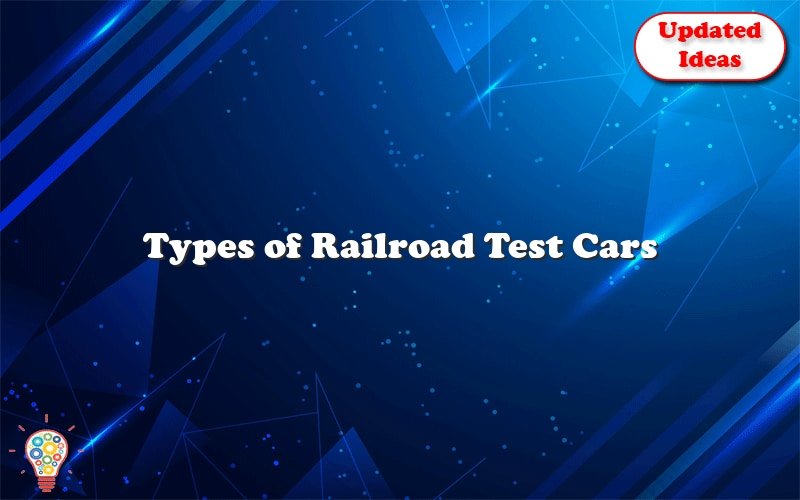A railroad test car is a locomotive that has been certified to meet strict safety and quality standards. A scale model of the train must not exceed 30 mph. Lake Erie Engineering builds these cars, and each car must be weighed to determine its weight. To ensure it meets railway specifications, the train must be maintained. Wikipedia has a scale model of the railroad test vehicle. It is important to note that scale models of locomotives may differ from actual production versions.
A railroad test car must also pass the alignment and geometry tests. The gauge is the distance between the rails. The rail will not work properly if it is too narrow or too broad. North American trains use a standard gauge of 4′ 8′ 8″ Rail profile is used for measuring wear and deviations in rail. Acceleration is also measured to assess ride quality. The accelerations are integrated with the position of the train.
A railroad test car is also known as a clearance car. Its primary purpose is to detect obstructions. Its other use is as an employee accommodation. Its name derives from the fact that it must transport railroad employees. Early MOW cars powered by passengers were called handcars. A rail car mover, which is similar to a HiRail truck, is a vehicle that transports rail cars. Some railroads use platform cars for other purposes, including transporting ammunition or railroad ploughs.
Another type of railroad car that is used in maintenance of the way service is the scale test car. It is used to calibrate track scales by moving along the side of the consist. It is a common feature on every North American railroad. In the photo above, two EJ&E scale cars are seen in the middle of a hopper car. It is important that you handle the train with care.
A scale tester car is used for calibrating weighing scales. The scale tester is made from very high quality materials and will not differ from the standard. A scale test car will have a very large discrepancy between the weight it has on its axles and the actual weight of the train. These factors should be considered when purchasing a railroad test vehicle. A railroad test car will not only have a weight, but it will also have other special features.
There are several types of railroad test cars. A scale test car is used for calibrating track scales. It is a maintenance car without instrumentation. A scale testcar can be found in a SP/SSW employee timetable, and it is used to calibrate weighing scales. If the scale does not have a weight reading, the train must be able to accurately read it. It must also have an accurate rail gauge.
To determine the train’s weight, a scale test car is useful. It can be either a CNW. They all have different types of scales, and it is important to know which ones are appropriate for your railroad. It is also important to note that a scale is not the same for every railroad. A test car with multiple axles is more likely than a standard to deviate.
To verify the accuracy of weighing scales, a scale test car is used. A railroad’s scale weighs exactly the same as a car. It is necessary to know the exact weight of a train before starting the calibration process. Then, the scale is adjusted if it is off. Another important parameter is the axle load. These vehicles are expensive for testing a train but are crucial to a freight railroad.
The ETT for the SP Western Region is slightly different than the rest of the country and may have a different layout from other regions. The ETT for this region is usually referred to as the SP-W Employee Timetable. It is used to determine the accuracy of a scale along a particular line. It is also used to test the accuracy of the train’s weight at a given station. A railroad must have reliable means of calibrating their cars, even though a test car might not have a scale.

